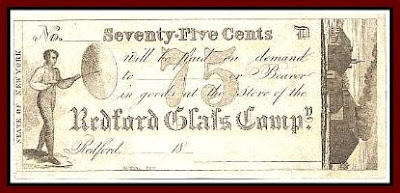 |
| Weaving on a Jacquard loom |
Most figured and fancy coverlets were made in the mid-Atlantic and Midwestern states from the 1820s through the 1850s. By that time, mechanized textile production was in full swing in New England, so hand weavers moved westward where they could still find a market for carpets, coverlets, and other figured textiles. Many of these men were first- or second-generation immigrants from Germany, England, Ireland, Scotland, or France, and they moved frequently within the U.S. in search of new customers. Weavers advertised in their local papers, and the coverlets themselves—marked with the name of the weaver, location, and date—were their own form of advertising.
 |
| Coverlet by Jacob Impson, Cortland Village NY, 1835 |
 |
| Coverlet by Archibald Davidson, Ithaca NY, 1848 |
 |
| Coverlet by Samuel Butterfield, New Hartford NY, 1837 |
The Civil War effectively brought the hand-woven coverlet industry to an end. Many weavers joined the army or went into other occupations for the duration of the war. By the time the war was over, almost all weaving was being done in factories. In the early 20th century, these coverlets became popular again with collectors, as examples of pre-industrial craftsmanship. There was also a movement to revive the lost arts of hand-weaving—which we’ll look at in more detail in future posts.
Information on coverlets and weavers is drawn from Clarita S. Anderson, American Coverlets and Their Weavers: Coverlets from the Collection of Foster and Muriel McCarl. And if you happen to be in western Pennsylvania, you can visit the McCarls’ collection at Saint Vincent College.








